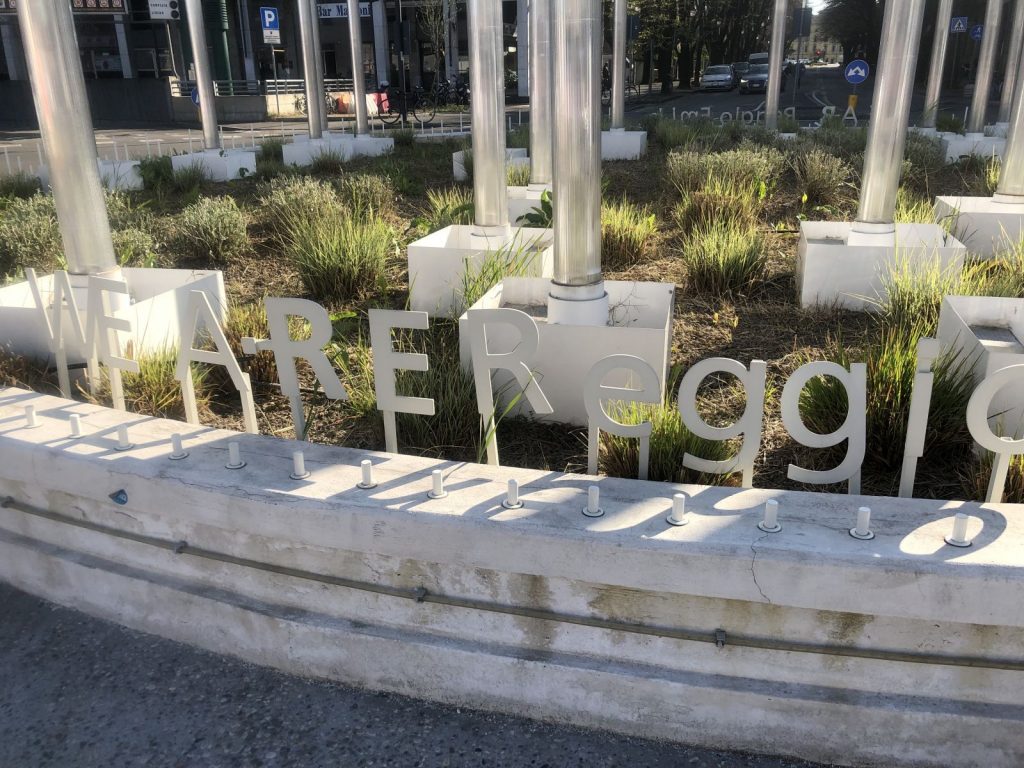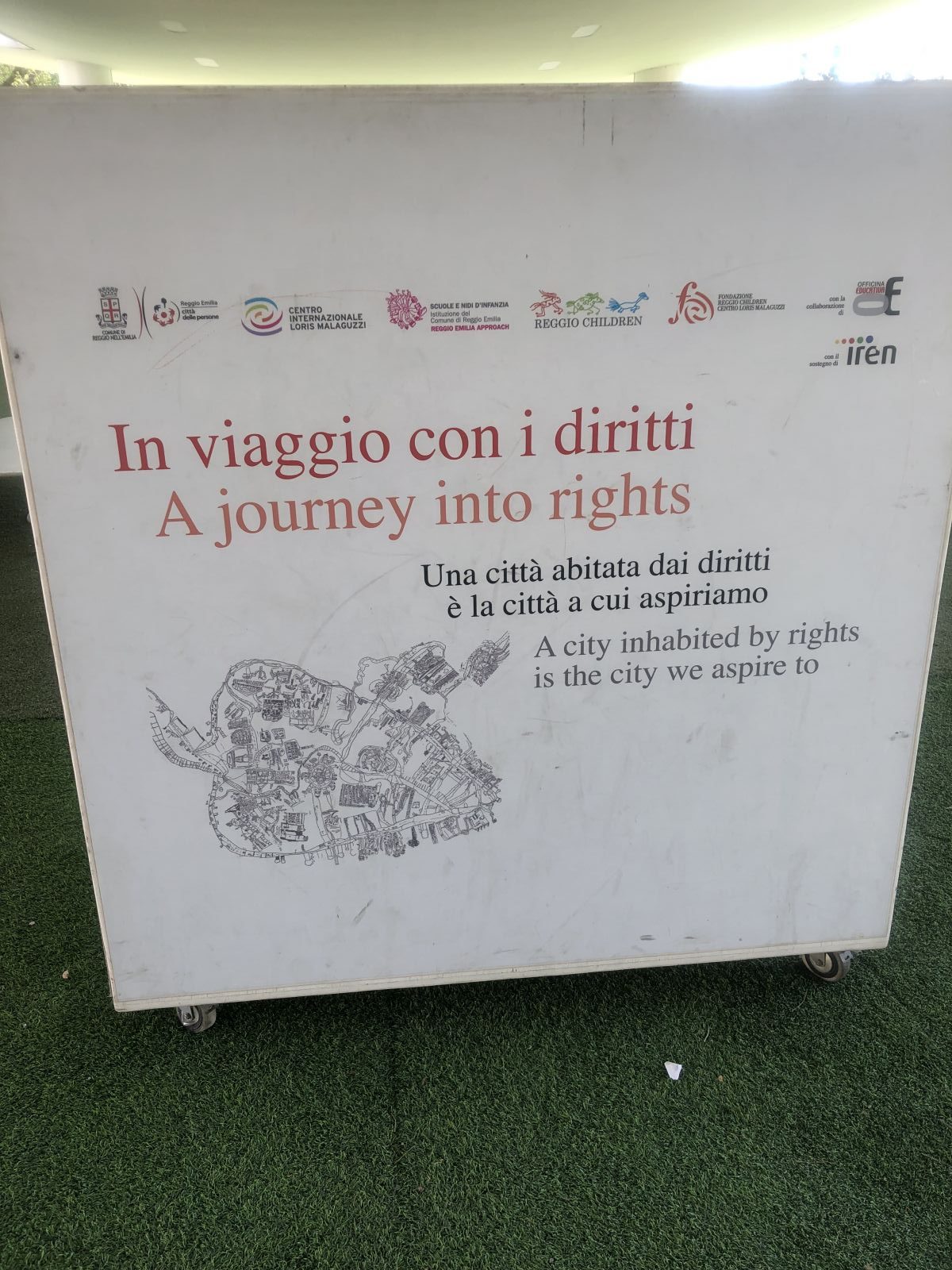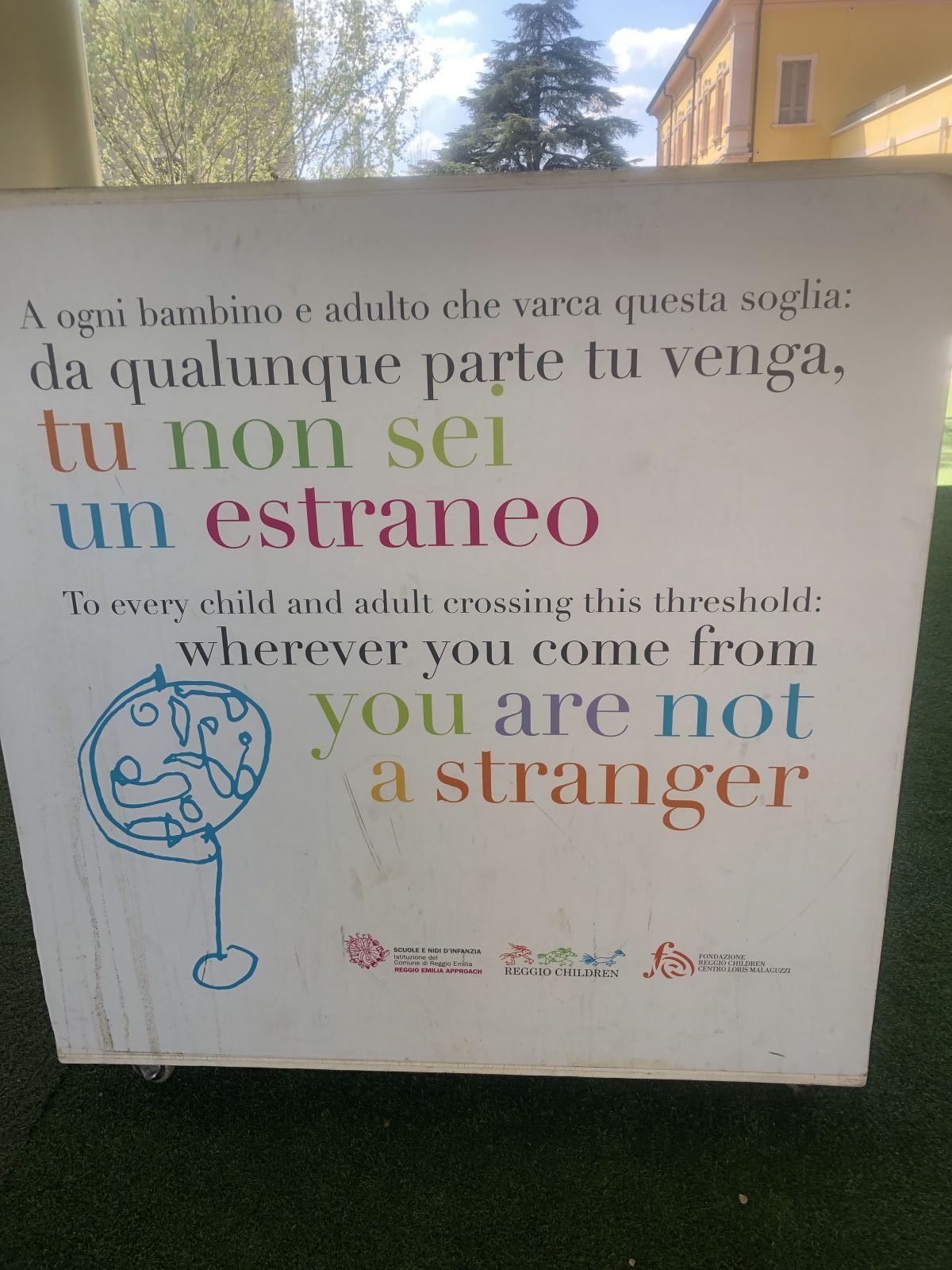
Inspirations from Italy – Reggio Emilia
[et_pb_section fb_built=”1″ _builder_version=”3.25.3″][et_pb_row _builder_version=”3.25.3″][et_pb_column type=”4_4″ _builder_version=”3.25.3″][et_pb_text _builder_version=”3.25.3″]
This spring I had the opportunity to travel, with a group of colleagues from my graduate program at Portland State University, to Reggio Emilia, Italy to tour the schools. While I have many thoughts to share about my trip, I want to focus on teacher preparation in a community that features emergent curriculum, joyful classrooms, and culture and context informing and shaping schools and classrooms. I spent a week in April in Reggio Emilia learning from teachers, curriculum experts, and other brilliant people who value children and hold them in high image. During this week, I visited schools across the city, attended lectures, engaged in group discussions, and toured beautiful ateliers (the Italian name for art studios within their schools). It was an incredible experience not only to witness beautiful learning in community, but to also be able to step back from the direct work happening with the children and realize that this entire joyful, transformative teaching practice flowed out of the desire that a few people had to make a more just world after experiencing World War 2.
One quote from Annalisa Rabotti, an educator in Reggio Emilia, that has stuck with me is:
“Children are always throwing out sparks of knowledge, curiosity, and inquiry and adults must be ready to catch those sparks. When the children are investigating and researching….this is what is like, little tiny sparks. You have to be ready to catch them as a teacher and blow on them to encourage them to grow bigger and ignite them further. If you have done your own research then you can be ready. If you haven’t you may not realize that spark and you might miss it.”

This quote sums up much of what we strive to do at Hilltop, and gave me a tangible way to think about the small spark-like moments of intrigue, knowledge, and curious joy that the children bring into the classroom each day. As educators, we use a practice called emergent curriculum, which allows us to document curriculum through learning moments as it’s happening, and plan for future curriculum based upon the interactions the children are having. We are doing our research by setting out specific materials to challenge a child to think about a material in a different way, use a material in a new way, or expand our current class topics and dialogue. In order to manipulate the materials in the way we do, it’s imperative that we observe the children’s interactions, take note of what we see, dialogue with our teaching team to make meaning of our observations, form connections to moments they have observed, and then plan to expand on those observations through the provocations or experiences that we set up for the children. It’s this work that happens every moment of each day in our classroom and not all of that research gets reflected back to families. In Reggio Emilia, parents were seen lingering in the hallways to read posted documentation, chatting with teachers here and there, and taking time at drop off and pick up to review their child’s collection of art, stories, and work. At Hilltop, we use learning stories, journals, printed and posted documentation, a weekly blog post, email, and more to share the journey of the kid’s sparks, our observations, learning moments, and other information with families.
Another observation that has stuck with me through my time returning home is that the children in the Reggio Emilia schools were filled with immense joy. Loris Malaguzzi, an Italian psychologist who was instrumental in founding the Reggio Emilia teaching philosophy, often said “nothing without joy.” This was evident in the freedom the children had to roam throughout the school at their own pace and addressing their own needs. It was seen in moments of dedicated work on art, building, or plant caretaking. It was felt through the children being given space to make their own choices (when to eat, when to do toileting, what clothes to put on before going outside, what activities to explore in the classroom, etc.). It seemed as though there was no pressure for the children to do any task at any scheduled moment, but rather they were given freedom to take care of their own needs throughout the day.
 As I am still processing the dynamic experience of being in such a life-giving environment that values the whole child, I find myself pausing to remember that what I witnessed in Reggio Emilia was not entirely foreign to me; I witnessed a representation of my values of joyful learning through play being expressed in a different cultural context. I live those same values in the work I bring to Hilltop, but recognize that we must also consider our own US context when thinking about education. The culture of Italy displays such different freedoms because they do not have the same licensing standards we have for childcare, which showed up in the fact that although the children were safe and cared for, they did not have to be within sight and sound of an adult at all times. This allowed for the children to roam from class to class, studio to kitchen, inside and outside, all as they pleased. It was incredible to see children as young as 2 having such freedom – often roaming down the halls from their classroom without an adult present, to complete another task, gather a material, or simply watch other kids work. This does not fit easily within our US context as we have different state-mandated requirements. These licensing and safety agreements are informed by the culture of those creating them, which has led me to be curious about various parts of our culture that have informed our view of how to best keep children safe. All of this to say, I’ve been reflecting on the use of context and the importance of culture being applied to educational philosophies. I am beginning to have some questions: We can’t truly be “a Reggio Emilia school” because we are not in the city or culture of Reggio Emilia, so what then does it mean to be “Reggio Emilia inspired?” How have we transformed the Reggio Emilia philosophy to fit our Hilltop context? We have many, many parts of our school that are unique to our school due to us embracing our culture and being responsive to our community’s needs. We have such unique teaching practices and classrooms that people will travel (both internationally and domestically) to experience what we have created at Hilltop through tours, meeting with our faculty, and watching our teaching in action – how cool is that?!
As I am still processing the dynamic experience of being in such a life-giving environment that values the whole child, I find myself pausing to remember that what I witnessed in Reggio Emilia was not entirely foreign to me; I witnessed a representation of my values of joyful learning through play being expressed in a different cultural context. I live those same values in the work I bring to Hilltop, but recognize that we must also consider our own US context when thinking about education. The culture of Italy displays such different freedoms because they do not have the same licensing standards we have for childcare, which showed up in the fact that although the children were safe and cared for, they did not have to be within sight and sound of an adult at all times. This allowed for the children to roam from class to class, studio to kitchen, inside and outside, all as they pleased. It was incredible to see children as young as 2 having such freedom – often roaming down the halls from their classroom without an adult present, to complete another task, gather a material, or simply watch other kids work. This does not fit easily within our US context as we have different state-mandated requirements. These licensing and safety agreements are informed by the culture of those creating them, which has led me to be curious about various parts of our culture that have informed our view of how to best keep children safe. All of this to say, I’ve been reflecting on the use of context and the importance of culture being applied to educational philosophies. I am beginning to have some questions: We can’t truly be “a Reggio Emilia school” because we are not in the city or culture of Reggio Emilia, so what then does it mean to be “Reggio Emilia inspired?” How have we transformed the Reggio Emilia philosophy to fit our Hilltop context? We have many, many parts of our school that are unique to our school due to us embracing our culture and being responsive to our community’s needs. We have such unique teaching practices and classrooms that people will travel (both internationally and domestically) to experience what we have created at Hilltop through tours, meeting with our faculty, and watching our teaching in action – how cool is that?!
My time in Reggio Emilia, Italy has reinforced for me that I work in a community that, while similar to others and perhaps even drawing inspiration from others, is entirely our own because we work hard to continuously be responsive to the cultural shifts and needs of our community. This responsiveness includes each individual classroom being responsive to the needs of the new group of kids each year. This year in my classroom looks different from last year, and will look different from next year, because we are a living community informed by those who make up our class. There is no way to replicate the amazing group of children and families that we get to partner with each year, and therefore our curriculum, schedule, and routines will vary from day to day, year to year. In this same way, our school culture will shift from year to year as we are embracing new families.
This has me left with more questions than answers about how culture, privilege, community can intersect and influence our schools and classrooms. In the spirit of reciprocal learning, I find myself wondering….
- How have you worked to translate the inspiration you’ve found from Reggio Emilia (or other programs) into your own context?
- What attributes of your school or classroom help create your unique culture and how do you foster those areas?
- How might the particular context of a neighborhood or city (economic privilege, race, regional or religious traditions, etc.) impact the culture of schools in that area? How does this impact on culture change if the community is homogeneous or varied and diverse?
Chauntae is an educator with 2- to 3-year-olds at Hilltop Children’s Center, where she has worked since 2017.
Hilltop is well-known and highly regarded in the Early Childhood Education community, for our pedagogical approach to working with children and families. In response to consistent requests from colleagues for trainings, tours, and consultations, Hilltop launched a professional development Institute in 2013. The Hilltop Educator Institute coordinates full-day curriculum training at Hilltop called Study Days, hosts a series of professional development workshops called the Educator Discussion Series, and provides coaching for other schools, facilitated by Hilltop’s own educators. Interested in spending time at Hilltop? Visit https://hilltopcc.com/institute/ or email Mike at institute@hilltopcc.org
[/et_pb_text][/et_pb_column][/et_pb_row][/et_pb_section]